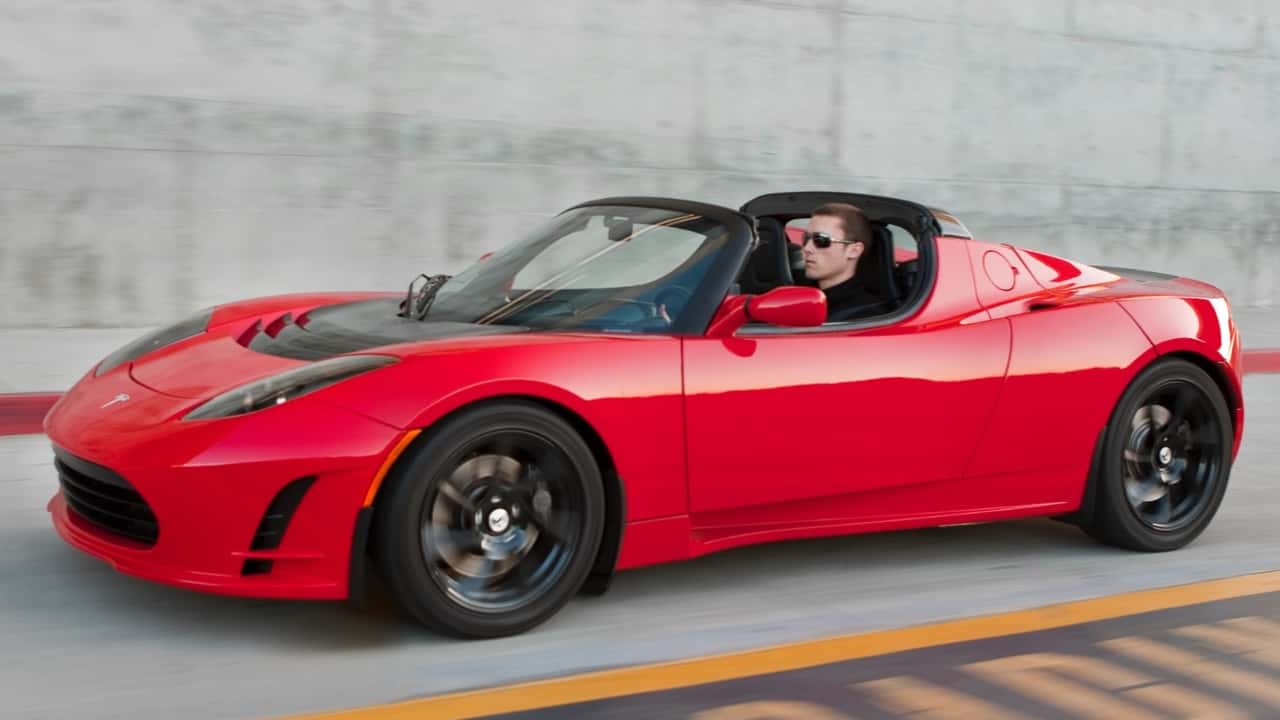Tesla’s original Roadster, released in 2008, was a groundbreaking electric vehicle that solidified Tesla’s reputation as an innovative company. While it was not produced in large quantities, with less than 2,500 units ever made, it remains the rarest Tesla model sold. Recently, Elon Musk, Tesla’s CEO, made an announcement on Twitter stating that all design and engineering information for the original Roadster is now fully open source.
Following this announcement, Tesla released a few new research and development documents for the Roadster on its Service webpage. However, these documents mainly include schematics for the battery monitoring board, vehicle display system, HVAC controller, and diagnostic software. They do not provide detailed CAD drawings for interior trim pieces, limiting the ability to recreate certain components through 3D printing.
While these resources may be useful for repairing the circuit boards mentioned, Tesla emphasizes that the information provided is not intended for manufacturer reference or repair and maintenance purposes. The company does not provide any warranties for work done by non-Tesla personnel using this information. Additionally, Tesla states that any parts or repairs created based on this information will not be considered genuine Tesla parts or accessories.
Overall, this release of information opens up possibilities for Roadster enthusiasts with the necessary skills to work on specific components of the vehicle. However, it falls short of enabling the complete replication of the original Roadster.
Title: Tesla Roadster’s Design and Engineering: A Revolutionary Leap as Musk Declares the Platform Fully Open Source
Introduction
In a groundbreaking move, Tesla CEO Elon Musk recently announced that the design and engineering of the highly anticipated Tesla Roadster will be fully open source. This decision represents a significant departure from traditional industry practices, offering a unique opportunity for collaboration and innovation within the automotive sector. By making the Roadster’s technical specifications open to the public, Musk aims to accelerate the wider adoption of electric vehicles (EVs) and drive a crucial shift towards sustainable transportation. This article explores the implications of this open-source approach and its potential impact on the future of the automotive industry.
The Power of Open Source
Open-source projects have long been associated with software development, enabling developers worldwide to collaborate and build upon existing ideas. In the realm of automotive engineering, however, such open sharing of designs, technologies, and engineering solutions has been virtually non-existent. Musk’s decision to embrace an open-source approach with the Tesla Roadster is a bold step that challenges conventional practices and sets a new precedent for the industry.
Collaborative Innovation
By declaring the Roadster’s design and engineering fully open source, Musk is actively inviting collaboration from automakers, engineers, and enthusiasts alike. This move breaks down the barriers that have historically limited innovation to the confines of strictly guarded patents and proprietary intellectual property. Engineers can now access detailed design specifications, technical diagrams, software code, and other resources necessary to develop and enhance EV technologies. This open invitation to collaborate has the potential to foster breakthrough advancements in electric vehicle infrastructure, battery technology, autonomous driving systems, and overall vehicle performance.
Accelerating EV Adoption
The Roadster’s open-source approach can be seen as a strategic move to tackle one of the greatest challenges facing widespread adoption of electric vehicles – the lack of infrastructure and options. By sharing the technical know-how, Tesla is paving the way for other automakers to leverage their expertise and accelerate the development of electric vehicles. This collaborative effort has the potential to unlock new possibilities for EV affordability, range, charging infrastructure, and the overall driving experience, thus making EVs more accessible to a broader market.
Benefits and Implications
The decision to declare the Roadster’s design and engineering open source will not only drive innovation but also help democratize the transportation sector. By making electric vehicle technologies accessible to a wider audience, Musk aims to inspire engineers, enthusiasts, and entrepreneurs worldwide to actively contribute towards the global transition to sustainable transportation. This open approach will also help foster transparency and encourage industry-wide cooperative efforts, potentially creating a more inclusive and competitive market.
Concerns and Challenges
While open sourcing the Roadster’s design and engineering offers a multitude of possibilities, it also presents certain challenges. Traditional automakers may be hesitant to embrace this approach due to concerns over intellectual property and the potential dilution of their competitive advantage. Additionally, ensuring the quality control of innovations developed through this collaborative platform will be crucial. Robust mechanisms for vetting, approval, and integration will need to be established to maintain the integrity and safety of any contributions and modifications.
Conclusion
Elon Musk’s decision to make the design and engineering of the Tesla Roadster fully open source is a landmark moment for the automotive industry. This bold move not only challenges conventional practices but also stimulates collaborative innovation within the EV sector. By sharing technical specifications and encouraging wider participation, the Roadster’s open-source approach has the potential to revolutionize the industry and fast-track the development of sustainable transportation. As automakers, engineers, and enthusiasts unite to work on this common platform, the future of electric vehicles appears brighter, more accessible, and ultimately, more sustainable.

